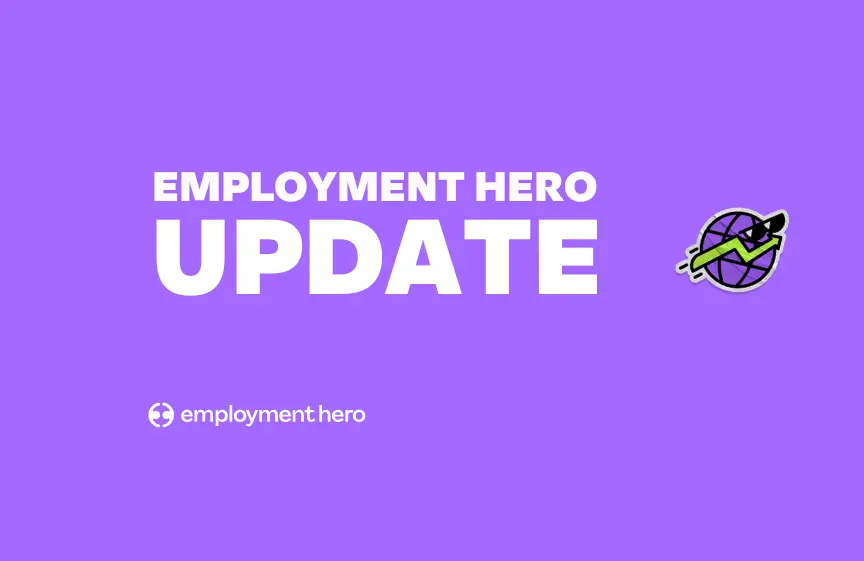11 innovative retention strategies for remote employees
You may not be able to offer your remote employees free coffee or snacks in the office, but there are lots of remote-friendly retention strategies that can work wonders.

Contents
Employee retention is a hot topic at the moment, and for good reason. Business owners globally are experiencing a turbulent period of high turnover as employees join the groundswell of the Great Resignation.
Even if your team is hybrid (working both in the office and remotely) or fully remote, employers should feel empowered to take action to retain their employees. You may not be able to offer them free coffee and snacks in the office, but there are so many great strategies that you do have access to.
Now that we’re a few years into the popularised remote working model, we’re seeing some innovative ideas in this space that can help keep your remote employees engaged – wherever they happen to be working.
Remote work is, in itself, a retention strategy.
First of all, employers of a remote workforce are already in a better position to retain their employees than those who demand in-office attendance.
Remote working is the clear choice for employees around the world. Our Remote Work Report 2021 survey found that 94% of employees want to work remotely at least one day a week. Of those, 28% would like to work from home every day, 50% want to work from home 2-3 days per week, and 16% would like to work from home at least one day per week.
Employers that support remote or hybrid working already have a competitive advantage for retention, so we want to acknowledge this working model’s impact as its own retention strategy.
We would caution, however, that retention efforts should not end with this benefit alone.
With more workplaces engaging with this working model all the time, it’s important to continue to implement employee retention strategies into the future.
What strategies can I use to retain remote employees?
1. Adopt a remote-first working model
It’s one thing to enable remote working, it’s another thing entirely to be a remote-first workplace. A remote-first approach means that remote working is your primary preference for your employees. Your entire team can complete their roles remotely with the needs of those working from home prioritised first.
What does this mean in practice? Well, it means that you consider your digital workspace to be the primary workspace, even if you have an on-site location.
So, for example, even if just one team member is working from home on the day, all meetings should be done over video conferencing, even if some employees are working in the office.
There is some fear-mongering amongst remote work detractors that employees will be disadvantaged in terms of relationships and development opportunities if they do not work face-to-face with their teams and managers.
This argument can be easily disproved with a remote-first model that puts an emphasis on valuing all employees, wherever they’re located.
2. Allow all team members to work asynchronously
Asynchronous working; difficult to spell, easier than you think to execute. An asynchronous working model recognises that different people on your team will do their best work at different times. It’s a new way to approach flexible work arrangements.
A traditional 9-5 working model, in many ways, is not conducive to modern life. It doesn’t allow for school drop-off or pick-up, child or other care responsibilities, appointments and more. It also makes working across different time zones a heck of a lot more difficult.
If you’re based in Sydney and dedicated to the 9-5 schedule, you’re not going to be able to access great international talent based in London or Hong Kong.
Asynchronous working requires trust that your employees are motivated to complete their work. If this seems like too challenging a prospect, you may need to ask some deeper questions about your employees’ motivation and engagement.
3. Make company information easily accessible
If your team is working remotely and/or asynchronously, a great documentation process is an absolute must. There’s nothing more frustrating for a remote worker than losing hours of working time to finding different documents or information that hasn’t been correctly organised.
When this isn’t a priority, the time lost can lead to employees disengaging and looking towards a workplace that is more organised.
There are a few different tools that you can use to make information more easily accessible to your team.
Here are just a couple which we recommend;
- Employment Hero: So we may be biased, but as we’re our own customer, we know how invaluable having a cloud-based system like Employment Hero is. The platform is accessible from any team member’s desktop or mobile app, helping all employees find company policies, announcements and team details in seconds. Employees can also access and update their own HR and payroll information, register leave requests, check rosters and download payslips.
- Confluence: Having a robust and accessible place to store all of your work in an online environment is an absolute must for remote teams. All pages on Confluence are dynamic, so teams can feed into them at any point in time and also know that they’re accessing up-to-date information when they review them.
- Asana: Asana creates a paper trail of projects and tasks, helping you boost transparency and keep your team aligned. You can add links to important documents, tag colleagues to review tasks, add meetings notes, levels of priority and so much more. It also means that as soon as you sit down at your desk, your team knows exactly what they’re working on for that day.
4. Provide a home office budget
This tip is short, sweet and effective. Allocate a home office budget for your remote team so that they can purchase some decent equipment to use every day. As you’re likely saving on real estate costs and budgets for office equipment, this is a great reallocation of those funds.
Ergonomics is not a very fun consideration, but having a great chair, desk, and appropriate equipment can boost productivity and well-being when working from home. These things go a long way in creating a comfortable and healthy work environment at home.
Log all of your employees’ purchases with their office budget in an asset register so that they can be recovered if they ever leave the business (not that they’d ever want to after receiving this great perk).
5. Create a strong remote culture
What makes a thriving remote culture?
Few things contribute to employee satisfaction more than strong company culture, and this is no different when working primarily in the digital space.
All of the things that forge connections and a sense of fun for on-site employees can be translated to a remote environment, it just takes a little bit of planning.
Here are some tips from our Remote-First Playbook:
- Weekly 1:1 Meetings: 1:1’s are meetings an employee has with their direct manager. This is time dedicated to the employee to talk through how their past week or fortnight has gone, as well as commit to tasks for the future. They can improve employees’ sense of connection and build positive relationships between employees and managers. By setting a weekly cadence, you’ll be able to open up the line for open communication.
- Weekly Virtual Yoga or Meditation: We love to see the intersection of workplace wellness and remote working. A great way to support physical and mental wellbeing in your organisation is to offer weekly yoga or meditation virtually every week. Organise an instructor to take your team through a 30-minute yoga flow or guided meditation session, and your team will thank you for it.
- Weekly All-Staff Meetings: All-staff meetings (or “All-Hands”) are a great way to learn more about general company updates, celebrate internal achievements and get everyone feeling like a team.
- Virtual Clubs or Events: Whether you’ve got an online book club, you organise teams to play online games, or you host virtual happy hours, spending time together in a virtual setting can make team members feel like they belong.
- Use great communication tools: Whether it’s Slack, Microsoft Teams or anything else, make sure that your team can communicate with each other as instantly as if they were in the office together.

6. Prioritise a healthy work/life balance
One of the most common complaints about remote employment is that work/life balance can be quickly eroded. As people’s homes become their workspaces, work responsibilities can begin to feel invasive in employees’ personal lives. This is compounded by managers who encourage employees to engage with this ‘always on’ mentality.
This has become such a problem for some businesses that Portugal banned bosses from texting and emailing staff after hours. The laws are part of a package around an employee’s ‘right to rest’, with companies facing fines if they do not comply.
It’s really important to communicate to your staff, especially if you offer asynchronous working, that you do not expect them to be working long hours that are outside of those outlined in their contract. Encourage team members to turn off their notifications when they are out of hours, don’t reward employees for working overtime on a regular basis and refrain from contacting your team members on their personal devices as much as possible.
7. Offer remote benefits and perks
Do your rewards often revolve around physical events? Maybe you’ve always taken your team out for lunch after a great month or handed out physical trophies in the office. Perhaps the boss is used to recognising staff with a desk visit and high-five but doesn’t find a way to convey the same sentiment virtually?
Remote-first reward and recognition is so important for keeping remote employees engaged. Regardless of location, everyone wants to feel appreciated for their hard work.
As our Employee Movement and Retention Report found, a lack of appreciation and recognition is one of the top reasons that employees are looking to jump ship. It’s essential to get this one right.
Want to see remote rewards in action? With Employment Hero, anyone in your team can use our ShoutOuts feature to highlight great work from another teammate. It’s remote-friendly, sustainable and can be tailored to your employee’s wants.
8. Seek employee suggestions with Employee Happiness Surveys
When it comes to employee retention, asking employees what they’d like to see from you is a seriously underrated strategy! Use an employee engagement survey to ask your remote team what they would like to see from you and if they have any concerns about your remote working culture.
Employment Hero’s Custom Surveys are a great tool to use for this; you can word questions exactly how you want to, ask specific questions to your business and allow your team to respond anonymously (always good to receive brutal honesty when it comes to retention!).
9. Provide remote training
Supporting employee learning and career development is a great way to fight turnover within your business. It sends a strong message that you value your employees; you’re literally investing in their personal growth, after all.
Create opportunities wherever you can for training and development, from mentorship programs to microlearning and online courses. There are many options available to suit a variety of resources, budgets and skills.
10. Organise an annual get-together
One of the great benefits of remote working for employees is that they’re free to live wherever they like, and they can avoid the dreaded commute. Although this is a huge plus in many ways, it can make it challenging to organise regular IRL get-togethers.
This is why we suggest making face-to-face get-togethers an annual affair. For best results, offer a multi-day, conference or retreat-style event. This allows you to organise get-to-know-you sessions, peer-to-peer lectures, group training sessions and of course, dinner and drinks.
Such events can consolidate a whole lot of team bonding into a few days, creating the perfect environment to facilitate lasting connections between colleagues. They’re an employee experience for your team to look forward to and can leave everyone feeling motivated, refreshed and inspired.

11. Be a remote industry leader
This one’s going to take some epic innovative thinking, but the payoff would be huge. If you’re passionate about remote working, and you’re putting innovative strategies into action to show it, be vocal about your efforts!
Widespread teams around the globe are still a relatively new concept for many, and people are looking for new thinkers in this space all the time. When you share your insights and learnings about running a remote business on platforms like LinkedIn, you’re going to gain some major gravitas in this increasingly important space.
Being a remote industry leader will also give you huge sway when it comes to attracting top talent.
Employment Hero’s global PEO service helps make hiring international employees easy. Find out how today by speaking to one of our business specialists. You can learn more about what PEOs and EORs are here.
A remote chance of turnover
When you implement innovative retention strategies, in conjunction with offering remote working, you’re already so far ahead of other workplaces in terms of competitive advantage.
Continue the two-way feedback loop with your employees and remember, just because you’re separated by distance doesn’t mean that you can’t have your most engaged team ever.
The more you invest in them, the more they will invest back into your business and stay loyal to your mission.
Related Resources
-
 Read more: 10 customer service interview questions for employers
Read more: 10 customer service interview questions for employers10 customer service interview questions for employers
Hiring for a customer service role? These 10 interview questions will help you find the right person for the job.
-
 Read more: Still Coasting? Why NZ SMEs Can’t Afford to Be Casual About Hiring
Read more: Still Coasting? Why NZ SMEs Can’t Afford to Be Casual About HiringStill Coasting? Why NZ SMEs Can’t Afford to Be Casual About Hiring
The casual approach to hiring is costing you – find out how to snap out of it.
-
 Read more: SEEK Cut the Cord. Here’s What We’re Doing About It.
Read more: SEEK Cut the Cord. Here’s What We’re Doing About It.SEEK Cut the Cord. Here’s What We’re Doing About It.
Seek is ending Employment Hero’s API access. Read about what we’re doing and how we are building a faster and…











